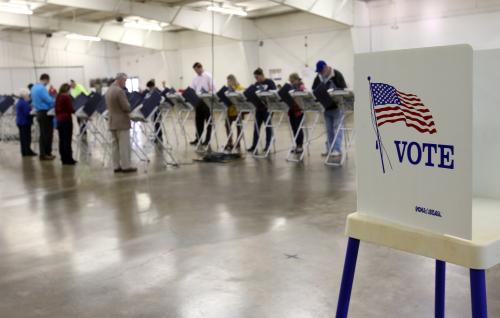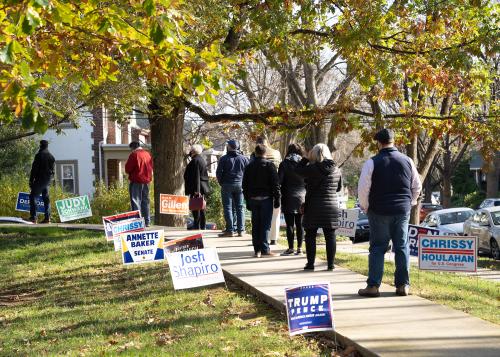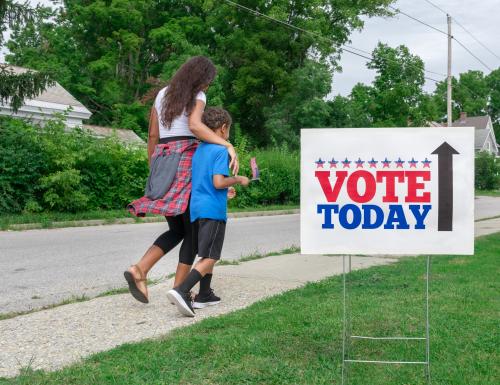The contentious political back and forth seen daily in the media, cable TV, and polls should come as no surprise in a nation where Donald Trump won the Electoral College but lost the popular vote by 2.9 million votes. Newly released Census population estimates for 2016 provide further evidence of just why the nation’s politics are split demographically. These data show that 31 million fewer Americans live in counties that voted for Trump than in those carried by Hillary Clinton.
According to the estimates, 177 million live in Clinton counties compared to 146 million in Trump counties*. County populations include persons of all ages, not just voters (see Figure 1). While it is true that Clinton took less than one sixth of the nation’s 3,100+ counties, she won most of the largest ones, including 111 of the 137 counties with over 500,000 people. Trump won the Electoral College by successfully navigating rural-urban balances in key swing states, taking small areas by large vote margins.

Notably, Trump is the first winning candidate since at least 1992 to carry only a minority of the nation’s combined county populations. Even George W. Bush, who lost the popular vote but won the 2000 election, won in counties that contained 16 million more people than those won by his opponent, Al Gore. And while in the other elections, Bush, Barack Obama, and Bill Clinton did garner county population advantages in the range of 46 million to 67 million, Hillary Clinton’s 31 million population advantage is still substantial. See Table 1 below.

Calculated as a share of the U.S. population, only 45 percent of residents live in Trump counties. Yet this share varies by demographic groups** When looking at households classed by income, it is the least well-off households that are over represented in Trump counties while the most well-off households are underrepresented (see Figure 2). Interestingly, less than one third of all households earning more than $200,000 reside in Trump counties.

Generally, Trump counties are least likely to be home to those with “urban” attributes. Only about one in five foreign-born residents live in these counties, compared with a much larger share of the United States’ native-born population (49 percent) that calls these places home. Fewer single than married persons are Trump county residents. Especially sharp divides are seen by race and ethnicity. Less than one fifth of all Asians and less than one third of all Hispanics and blacks live in counties carried by Trump.
By contrast, 56 percent of the nation’s white population lives in Trump counties. Yet this is not the case for all whites. Nearly two thirds of whites with just a high school education are Trump county residents. This falls to 57 percent for those with some post secondary education but without a college diploma. But among whites with college degrees, only 42 percent reside in Trump counties.
The profiles of Trump’s America and Clinton’s America might best be compared when looking at the age and racial make-up of counties that voted for each candidate (see Figure 3). Trump’s America is clearly whiter and older. Even young people living in Trump counties are predominantly white, despite the fact that the national child population is nearly “majority minority.”

Populations in counties where Clinton prevailed are younger and decidedly more diverse. In Clinton counties, as a group, minorities outnumber whites for all ages under 45 and are not far behind whites in the 45-54 age group.

These Census data make it clear just how sharply divided the nation is politically, demographically, and geographically; more so now than at any other time in recent history. Right now, the Republican Party has control of the presidency, Congress, and a majority of state governments. But demographic projections suggest the groups now in Clinton counties will continue to grow and disperse to the future advantage of Democrats. It is a precarious time for the nation’s political apparatus. Neither party should assume that it can hold sway for the long run without reaching out to others in the rest of the country.
*Because voting information was not tabulated for counties in Alaska, which Trump won by 14 percent, all of Alaska’s population was allocated to Trump in these results.
**Statistics shown for social and demographic groups are based on 2015 census estimates and 2011-2015 multiyear American Community Survey data, the most recent data available at this time.







Commentary
A substantial majority of Americans live outside Trump counties, census shows
March 23, 2017